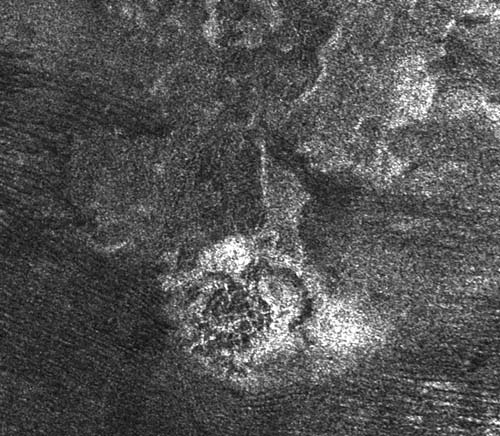cryovolcanism

Doom Mons, a suspected cryovolcano on Saturn's moon Titan. Cassini image, 2007.
Cryovolcanism is the eruption of water and other liquid or vapor-phase volatiles, together with gas-driven solid fragments, onto the surface of a planet or moon due to internal heating. It has been observed on only one world to date: Triton, the largest moon of Neptune. Geyser-like plumes of nitrogen were discovered on Triton during the flyby of Voyager 2. However, there is indirect evidence that cryovolcanic processes may have taken place elsewhere in the outer Solar System and might even be active today on moons such as Europa and Enceladus.
Ice-volcanic melt is the fluid or semi-fluid material associated with ice volcanism; like molten rock, it can have a wide variety of viscosities and other flow properties.


